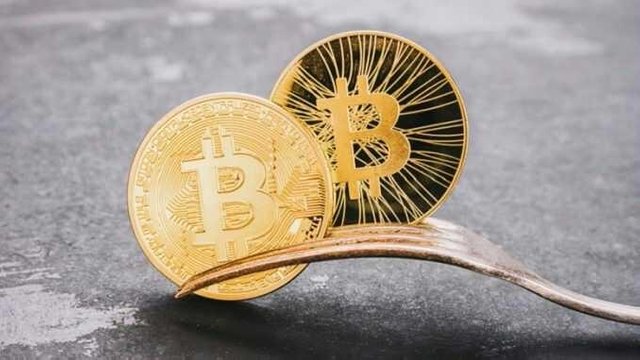What is a Bitcoin fork?
If you’re new to cryptocurrency, you have probably spent the last couple of hours being ruthlessly inundated with a whole new dictionary of terms: ‘Blockchain’, ‘Forking’, ‘Mining’… you’ve probably also visited half a dozen forums with the aim of getting a firm hold on exactly what these terms mean, and have come away more confused than when you started. This article is a real, from-the-ground-up, back-to-basics explanation of one particular term: Forking. But first, let’s get the fundamentals down before we discuss a bitcoin fork.
bitcoin fork
Source: (Cointelegraph.com , 2018
What is a Bitcoin?
A Bitcoin is a form of money that exists only on the internet. You can’t hold one, but you can own one, or parts of one (think of it as change) in a virtual ‘wallet’. Just like how in real life you can own a one dollar coin, or 25 cents, and have it in your real wallet.
Where do they come from?
Someone created a set of rules which meant that by solving maths problems, a Bitcoin would be created. This is called ‘Mining’. Anyone can solve these maths problems if they like, but it helps if they have a really good computer. The better the computer, the less time it takes. Once a Bitcoin is mined, the person who mined it first can sell it for whatever price they like on the Bitcoin market.
Who runs Bitcoin?
The actual identity or identities of the people behind the idea, and who set up the initial rules, is not known, but they go by the name of Satoshi Nakamoto. But just because they created the code, doesn’t mean they own all the Bitcoins. Once someone solves a maths problem and creates one, it’s theirs, and they can sell it. They can decide how much to sell it for, and anyone else can decide if they want to buy it for that price. Once it’s gone, it’s gone! Someone else has it then. A record of this is written down in what is essentially an online ledger (what bankers use to keep a record of your spending) called the blockchain.
bitcoin fork
Source: GCN.com, 2018
What is a blockchain?
When you buy a digital thing from someone, there is a problem. How do you know that the person selling it to you hasn’t just made a bunch of copies of the thing you’re buying? In that case, the thing isn’t yours at all, it’s just a copy. To solve this, every time someone sells a bitcoin to someone else, it is written down in a digital block, which is part of many other blocks called the blockchain. This means that, according to the blockchain, that Bitcoin no longer belongs to the seller, but to the buyer. Every single person who takes part in Bitcoin, whether they are a developer, a miner or just a trader, has the blockchain on their computer. Their computer is referred to as a ‘node’, and every single person’s blockchain is updated at the same time whenever anything at all on the network changes. The change could be a transaction, for example. This means that no single person is in control of this information, and every time someone sells or buys anything, everyone knows about it. When a block gets too full of information, a new one is created and added on to the chain, and it starts all over again. Similarly, no single person or group runs the rules. If enough people decide they want to change how Bitcoin works, they can! But it needs to be a majority vote.
So what happens when the rules are changed?
If enough people vote for the rules to be changed, then the rules will change. Developers will change the network code, and people (usually miners) will vote by updating their nodes with the new code. When this happens, the blockchain splits into two parts: One part with the old rules, and one part with the new ones. This is called a fork, and there are two types. A ‘hard fork’ and a ‘soft fork’.
What is a hard fork?
Put simply, when a hard fork happens, the new, updated network will no longer recognize any nodes that are using the old rules. So a user will have to upgrade their node to the new rules if they want to use the upgraded Bitcoin. A rule change could be, for example, changing how big a block can be on the blockchain before a new one has to be created.
Remember what I said before about how a new block is made when an old one gets too full? Say everyone votes for the block size to go from 1 Megabyte to 7 Megabytes, so blocks take longer to fill up. In an ideal world when the rules change, a new blockchain will branch off, the old one will be abandoned, and everything continues exactly the same, only now with bigger blocks. But we don’t live in an ideal world, so it doesn’t always work this way.

For future viewers: price of bitcoin at the moment of posting is 8070.10USD
!cheetah ban